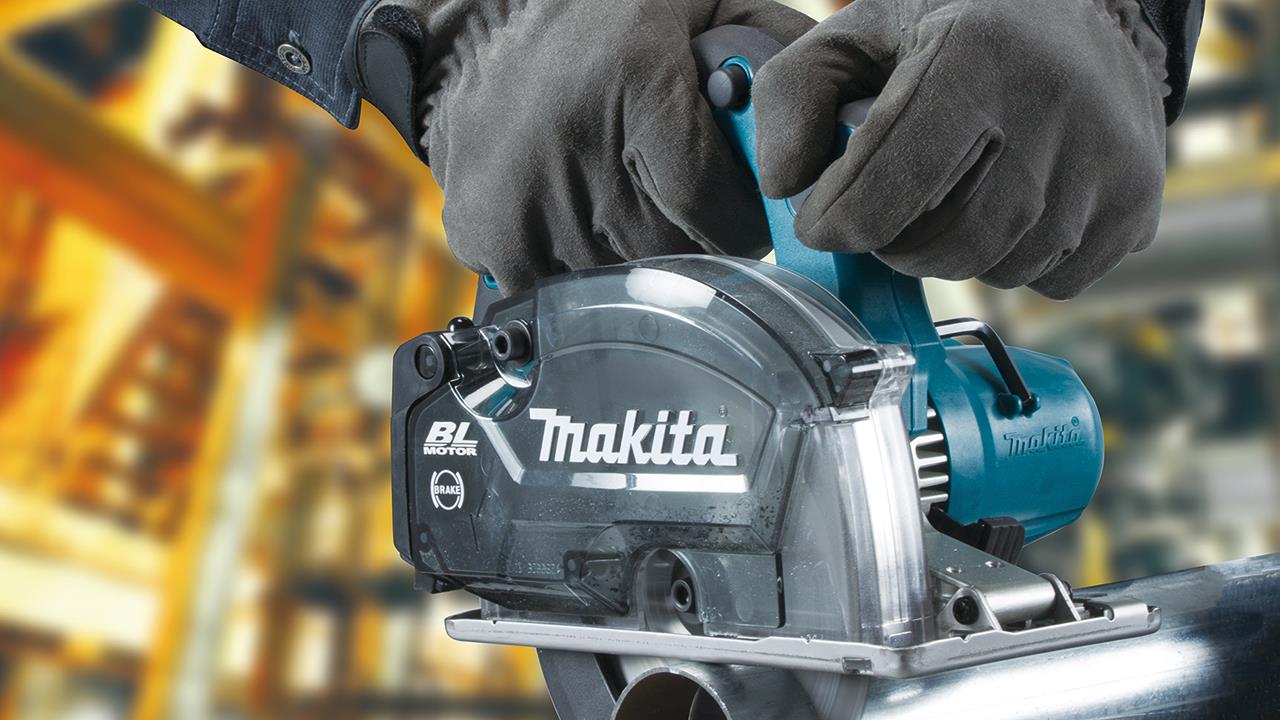

Tony Coleman, Technical Manager at Makita, explores some of the safety considerations to think about when selecting power tools.
For professional installers, the use of power tools is part and parcel to the working day. However, the use of machinery can pose significant risks to untrained users – which is why it is so important to scrutinise the product features and ensure work can be carried out safely.
Dust
According to the Chartered Society for Worker Health Protection, occupational lung disease causes an estimated 13,000 deaths per year – and construction workers are at a higher risk. When carrying out tasks such as drilling holes, cutting tiles and wood, or removing rubble, dust, and debris from site, operators are exposed to dust particles.
Over time, breathing in these particles can cause serious, long-term, and life-threatening diseases like lung cancer and chronic obstructive pulmonary disease. It is therefore paramount that measures are taken to control dust on-site.
Many will be familiar with the legal requirement to use respiratory protective equipment (RPE), but might not be aware that the minimum requirement is a P3/APF 20 (Assigned Protection Factor) classification mask or similar.
RPE should always be fitted and tested properly to ensure it provides maximum protection and fits the face correctly.
In addition, on-tool dust extraction units provide a method of reducing dust, as they capture the dust at the source and prevent it from becoming airborne (and posing a risk to those on and around the site). There are several solutions, including dust extractors, accessories, and attachments that can be applied for use in drilling, breaking, and cutting applications.
To meet the minimum legal requirements for most construction materials, the dust extractor must be M-Class – that is, an extractor that removes 99.9% of dust without the extractor venting dust back into the air through its exhaust, so that occupational exposure limits are as low as =<0.1mg/m³.
When choosing a dust extractor, always check the features included to help maximise on-site efficiency. For example, leading models can power corded tools from the unit, which minimises the number of cables on-site. Also look for ‘auto-start’ settings that allow the extractor to run automatically when the tool is in use. With this, the operator is always protected when the tool is powered on and the extractor does not have to be left running for extended periods between tasks.
Noise
Noise is part of everyday life, but loud noise like that produced by power tools can permanently damage hearing. To minimise exposure, ear protection must be worn correctly and whenever noisy work is undertaken. Always look to control the noise at the source by carefully considering the equipment being used as some machines will produce lower noise levels than others.
Vibration
Another issue to watch out for is vibration from power tools. If steps are not taken to limit the amount of vibration a machine produces and the level of exposure an individual receives, then injuries such as Vibration White Finger or Hand-Arm Vibration (HAV) will occur, which results in nerve damage that can lead to pain, tingling, numbness, and reduced dexterity in the affected area. To minimise risk, choose power tools that produce low vibration levels.
Power supply
Opting for cordless tools can keep sites safer, as trip hazards are virtually eliminated – not only for the user, but also the customer. Operators also do not have to carry around heavy transformers. What’s more, they are ideal for working in tight and awkward spaces as they offer the flexibility to freely move around the work area and operators can position themselves in a way that makes the work easier and safer. Users are also not constrained by a power lead or the location of power supplies.
Tool transportation
It is also important to consider how tools will be manoeuvred around a site and to and from the van safely. Many manufacturers produce carry cases for power tools that can be easily stacked on top of each other and mounted onto a base or trolly. This enables the user to transport multiple tools at once and store them on-site neatly and safely.
Furthermore, choosing a selection of quality accessories can help keep machines safely stored away and close at hand when not in use. Opting for a connecting system will be a huge benefit to users, as belts or shoulder straps can be easily attached to pouches, holders, bags, and cases for trouble free carrying.
When selecting power tools, it is important to always consider the health and safety features included and to look to ensure that issues such as dust inhalation, HAV, noise, and increased risk of trips and falls are reduced
If you'd like to keep up-to-date with the latest developments in the heating and plumbing industry, why not subscribe to our weekly newsletters? Just click the button below and you can ensure all the latest industry news and new product information lands in your inbox every week.